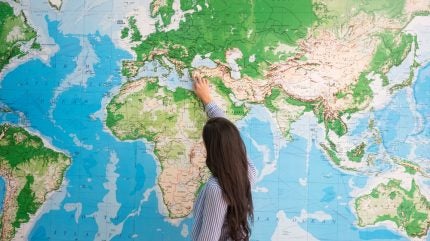How new US tariffs will alter fashion sourcing’s map

HOW NEW US TARIFFS WILL ALTER FASHION SOURCING’S MAP
Fashion
is a slim margin business that relies on a global supply chain to make a profit
but Trump's steep US tariffs on the fashion sourcing majors risk unravelling
the sector quite literally at its seams.
Just Style regularly reports on the leading fashion sourcing destinations as well as new ones to watch.
The usual suspects include China, Vietnam,
Bangladesh, Thailand and India. In one fell swoop US president Trump has made
it more expensive for fashion sourcing executives to source from these go-to
destinations.
China is the biggest fashion importer to the
US by some distance. Shipment volumes to the US were 861m SME in January, according
to the latest US Office of Apparel and Textiles’ (OTEXA) data available.
It now faces a tax of 54% on all goods imported to the US, including fashion,
but is retaliating with a slightly lower tariff of 34% on all US goods,
including fashion.
Trump is very open about wanting to target
China specifically. He did this during his first presidential term with the 301
tariffs and he’s doing it again with these much higher ‘taxes’ by another name.
This could also explain why he has slapped
such steep tariffs on China’s closest neighbours. These countries are known to
produce some garments on China’s behalf to escape tariffs, so in Trump’s eyes
this workaround will no longer be possible.
Vietnam, which was the US’ second largest
importer in January and continues to have a close relationship with China for
fashion sourcing now faces a 46% tariff on all imports.
Similarly, neighbouring Cambodia has been
struck by 49% tariffs with Cambodia’s Centre for Alliance of Labour and Human
Rights (CENTRAL) already predicting garment factory closures which will force
workers to migrate to pay off debts and their children dropping out of
school.
Bangladesh which was the third largest for
US fashion imports in January by volume will now have to endure a 37% tax on
all of its US fashion exports. This is also a significant blow to the South
Asian nation given it relies on the fashion and textiles sector for its
economic growth and development. Plus, it is trying to overcome its rocky 2024
which saw garment worker and student protests make international news ahead of
its longstanding prime minister resigning and fleeing the country.
So, if the future global fashion sourcing
map is shaped purely around the countries facing minimal impact from Trump’s
tariffs what could it look like?
The picture is changing every day, but the
most attractive fashion sourcing options for US brands would be trusted fashion
sourcing countries that sit on Trump’s minimum 10% tariff list. These countries
include Türkiye and Morocco as well as members of the Central America-Dominican
Republic Free Trade Agreement and African Growth and Opportunity Act.
By Just Style
